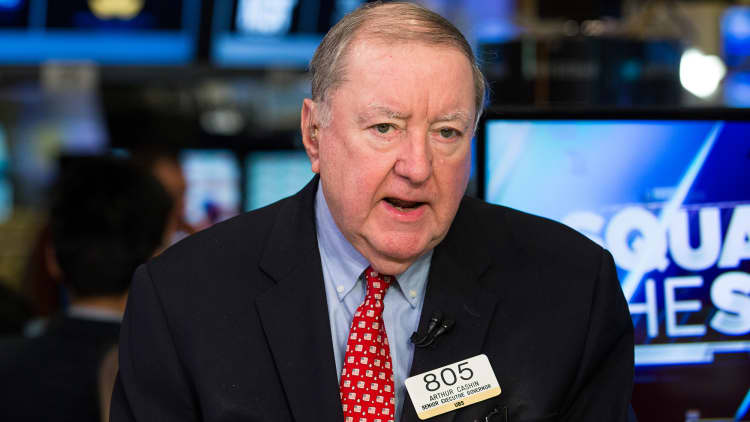
UBS Financial Services Managing Director Art Cashin said this year's market volatility reminds him of the 1987 stock market crash.
"It's a good deal more volatile than almost anything else you've seen," said Cashin, who began his career at Thomson McKinnon in 1959. "It is unfortunately reminiscent of some of the volatility we saw in '87," he said Thursday on CNBC's "Closing Bell."
Cashin, now one of six executive floor governors at the New York Stock Exchange, was referring to the volatile market that began on Oct. 19, 1987, in Asia before spreading to Europe and then the United States later in the day. The Dow Jones industrial average fell more than 500 points — or 22 percent — in a single day. The volatility moved across time zones the following morning, crashing markets in Australia and New Zealand.
Veteran traders were reminded of the events, dubbed "Black Monday" and "Black Tuesday," this week.
On Wednesday, in early morning trading hours, the Dow Jones industrial average fell sharply, only to make a roaring comeback later, rallying more than 700 points and closing 230.94 points higher. The S&P 500 and Nasdaq Composite also erased early trading-day losses and closed higher.
Market movement continued on Thursday, with the Dow closing 240.92 points higher at 24,505.22. The S&P 500 and the Nasdaq were also up, with the S&P gaining 0.7 percent to close at 2,662.84 and the Nasdaq Composite up 0.5 percent to close at 7,076.55.
"This is the year of volatility," Stephanie Link, managing director and U.S. equities manager at Nuveen, said on "Closing Bell." Link pointed out that there were 28 days in the first quarter alone when the market has moved plus or minus 1 percent, compared with only eight times in all of 2017.
"This is a time of uncertainty," Link said. "The market doesn't like uncertainty."
Market watchers have been on edge in recent weeks with looming fears of potential trade wars and increased scrutiny in the technology sector.
Both the Dow and S&P have fallen into correction territory this year. At its low, the Dow was down 12 percent from January highs. The S&P is still down 7 percent from its January highs.
"It's been a bumpy road," Cashin said.


